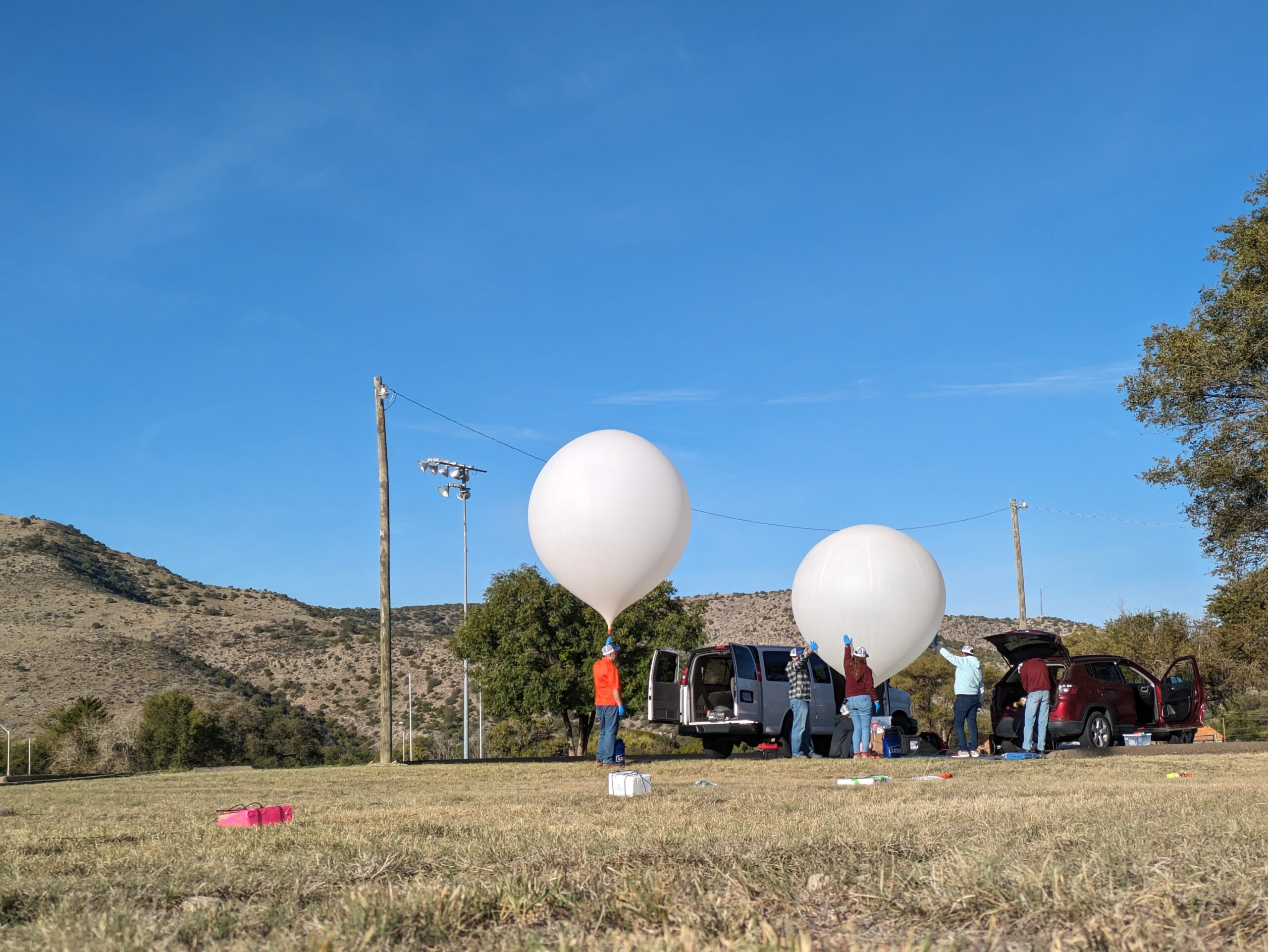800 STEM Students Nationwide Gear Up to Launch Weather Balloons on Eclipse Day
Participants in the National Eclipse Ballooning Project will have their images of the total solar eclipse livestreamed on NASA’s site April 8.
By Sierra Lyons | April 5, 2024Corrections appended
For a year and a half, 20 eager Virginia Tech students have diligently prepared their scientific balloons for Eclipse Day. Along with about 800 other undergraduates nationwide who will participate in the NASA-sponsored National Eclipse Ballooning Project, these STEM students will launch balloons with scientific instruments attached to gather more information about Earth’s atmosphere.
On April 8, a total solar eclipse will cross North America, tracing a path over far more populated areas of the United States than the last one in August 2017. The project, which Montana State University started in 2017 to involve STEM students in this historic day, includes 53 teams who will document an event that won’t happen again for another 20 years.
Angela Des Jardins, director of the project, says the experience provides students with hands-on opportunities that they don’t get in the classroom. Of the 75 colleges taking part, 30% are minority-serving and 15% are community colleges.
“Ballooning has been around for a long time, and some of the bigger institutions that have more resources, it’s easy for them to go do this kind of thing,” Des Jardins says. “What’s really important is to give students opportunities that wouldn’t have them otherwise.”
The project also offers students access to over 200 mentors and a speaker series where NASA scientists and other experts in the field offer career advice.
The program has two tracks: atmospheric science and engineering. Each group is focused on preparing its payloads. For the atmospheric science groups, these are instruments like radiosondes that are used to measure temperature, humidity and wind speed. Radiosondes are the same instruments used by the National Weather Service at least twice a day at the 93 stations across the country.
“The thing that’s different from what the National Weather Service does is, instead of just flying two a day, they [students] actually fly one every hour 24 hours before the eclipse, then six hours after,” Des Jardins said.
Des Jardins says flying the radiosondes multiple times gives students a snapshot before and during the eclipse to compare the changes caused by the cold, dark shadow of the moon.
For engineering team members, the payloads involve different types of cameras, such as GoPros and 360-degree cameras. NASA will be livestreaming the images they capture on its website.
The project is not only beneficial for documenting history and allowing environmental scientists to understand the atmosphere better as they research climate change. The highly technical experiment also gives students experiences they need as they pursue internships, graduate school and full-time jobs.
Virginia Smith participated in the 2017 challenge during her senior year at the University of Kentucky as a mechanical engineering student. Like many of the current participants, Smith came on to the project having little experience with technical electronics. She started by building boxes for the cameras to be placed on the balloon’s flight string. Her team had two balloons, one of which she was in charge of. As mission lead, she says, timing was everything. It was crucial that the balloon reached 100,000 feet right in time with totality, which occurs when the moon is completely obscuring the sun.
“Students create timelines that allowed us to be at a particular altitude during totality and record footage, which was the entire goal of that project,” Smith said. “As mission controller, not only making sure that the other people who have payloads are ready to go, you’re making sure that you’re on that timeline. You have a very small window to hit for the launch. And if you miss that window, you’re going to miss your altitude target.”
Smith credits the project from seven years ago for her interest in satellites and balloons. The project also helped her during her two internships at NASA in 2016 and 2017, where she focused on designing small satellites and did finite element analysis, which involves using calculations to predict how an object might behave under various conditions.
Now, as a graduate research assistant and Ph.D. candidate in aerospace engineering at Virginia Tech, she has been mentoring this year’s participants for the last year and a half, offering her first-hand knowledge to the group as a former mission lead. The team will be stationed at Three Rivers College in Missouri on the big day and flying two balloons.

What she learned during those internships “actually did come into play for the [2017] eclipse, because we were designing payloads … and making sure they could withstand impact in terms of landing,” Smith said. The team had to consider multiple possibilities, such as the balloon landing in water, in a high tree or on top of a roof. “There are all these scenarios that you’re looking at. How do you make a successful design to survive the environment both in the atmosphere and then also as you land?”
Smith is excited to be able to view the total eclipse for a longer period this year. But she’s most looking forward to seeing the hard work the students have put in for several months, with test launches and payload development, pay off. Many team members are transfer students from community colleges and came in with different skill sets and no background in engineering or ballooning. This experience has helped multiple students get summer internships.
“We get to enjoy the eclipse and then we get to enjoy totality. It’ll be an exciting event for everyone, and most of the students have not seen an eclipse before. So this is also an opportunity for them to be able to experience natural phenomenon that will not be coast to coast in the U.S. for several years more,” Smith said.
Corrections: The name of the NASA-sponsored organization is the National Eclipse Ballooning Project. The project reached out after publication to correct the balloon’s target altitude. It’s 100,000 feet.
Get stories like these delivered straight to your inbox. Sign up for The 74 Newsletter

